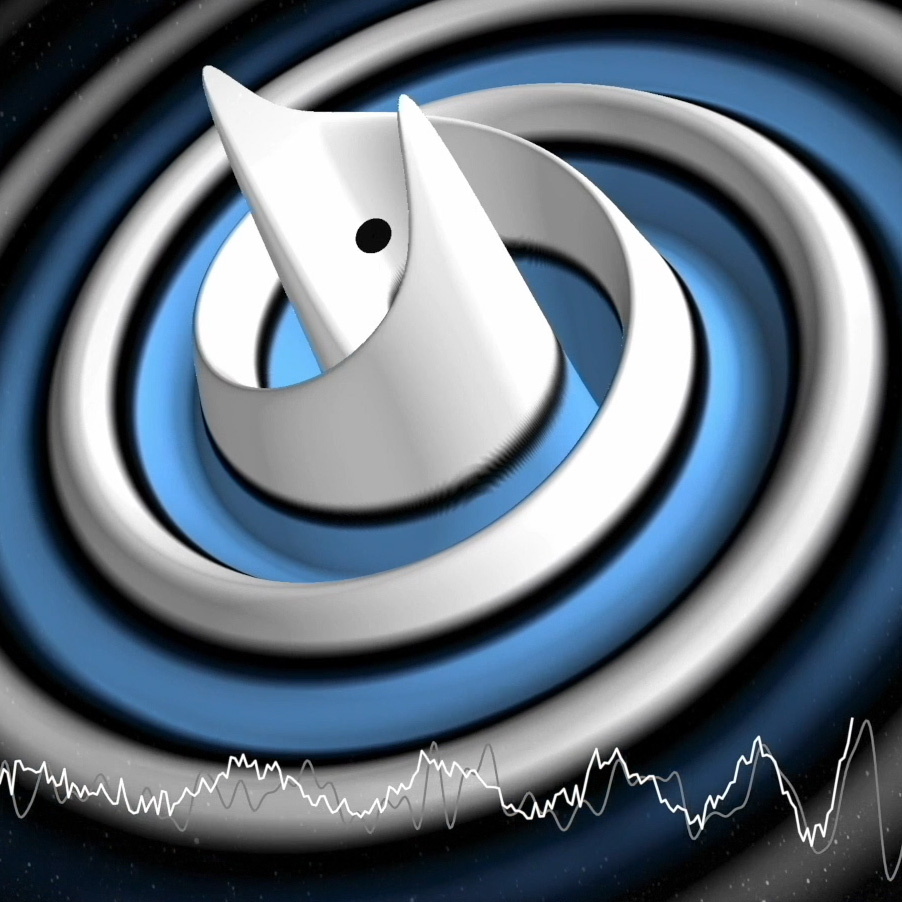accelerate: To experience a change in velocity (speed).
black hole: A region of space having a gravitational field so intense that no matter or radiation (including light) can escape.
cosmos: (adj. cosmic) A term that refers to the universe and everything within it.
develop: To emerge or to make come into being, either naturally or through human intervention, such as by manufacturing. (in biology) To grow as an organism from conception through adulthood, often undergoing changes in chemistry, size, mental maturity or sometimes even shape.
equation: In mathematics, the statement that two quantities are equal. In geometry, equations are often used to determine the shape of a curve or surface.
gravity: The force that attracts anything with mass, or bulk, toward any other thing with mass. The more mass that something has, the greater its gravity.
laser: A device that generates an intense beam of coherent light of a single color. Lasers are used in drilling and cutting, alignment and guidance, in data storage and in surgery.
LIGO: (short for Laser Interferometer Gravitational wave Observatory) A system of two detectors, separated at a great geographical distance, that are used to register the presence of passing gravitational waves.
mass: A number that shows how much an object resists speeding up and slowing down — basically a measure of how much matter that object is made from.
observatory: (in astronomy) The building or structure (such as a satellite) that houses one or more telescopes. Or it can be a system of structures that make up a telescope complex.
physics: The scientific study of the nature and properties of matter and energy. Classical physics is an explanation of the nature and properties of matter and energy that relies on descriptions such as Newton’s laws of motion. Quantum physics, a field of study that emerged later, is a more accurate way of explaining the motions and behavior of matter. A scientist who works in such areas is known as a physicist.
pitch: (in acoustics) The word musicians use for sound frequency. It describes how high or low a sound is, which will be determined by the vibrations that created that sound.
relativity: (in physics) A theory developed by physicist Albert Einstein showing that neither space nor time are constant, but instead affected by one’s velocity and the mass of things in your vicinity.
spacetime: A term made essential by Einstein’s theory of relativity, it describes a designation for some spot given in terms of its three-dimensional coordinates in space, along with a fourth coordinate corresponding to time.
surface area: The area of some material’s surface. In general, smaller materials and ones with rougher or more convoluted surfaces have a greater exterior surface area — per unit mass — than larger items or ones with smoother exteriors. That becomes important when chemical, biological or physical processes occur on a surface.
theory: (in science) A description of some aspect of the natural world based on extensive observations, tests and reason. A theory can also be a way of organizing a broad body of knowledge that applies in a broad range of circumstances to explain what will happen. Unlike the common definition of theory, a theory in science is not just a hunch. Ideas or conclusions that are based on a theory — and not yet on firm data or observations — are referred to as theoretical. Scientists who use mathematics and/or existing data to project what might happen in new situations are known as theorists.
unique: Something that is unlike anything else; the only one of its kind.
wave: A disturbance or variation that travels through space and matter in a regular, oscillating fashion.

